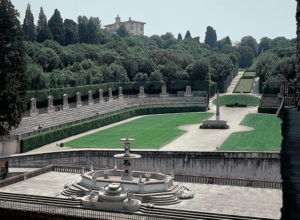All Boboli Garden Entrances Reopen

The Boboli Gardens opened all of its gates for the first time in two years, with residents of Florence and its metropolitan area granted free admission to three of the four entrances starting July 5.
Because of COVID-19 related staffing shortages, the Porta Romana and Forte Belvedere gates have been closed to the public since the first lockdown in 2020.
The other entrances include Annalena, which is located at Via Romana 37/a, and the Piazzale di Porta Romana entrance at the southern end of the gardens.
Now, in addition to the long-established free entry for residents at Annalena and Porta Romana, residents have free admission from the Forte Belvedere entrance as well. However, the deal is not valid through the main Pitti Palace entrance, which can be accessed from Pitti Square on the left side of the courtyard.
To qualify for free admission, locals must present a document certifying residence (such as a carta d’identità or Italian drivers license) in the metropolitan area, which comprises Bagno a Ripoli, Calenzano, Campi Bisenzio, Fiesole, Firenze, Impruneta, Lastra a Signa, Sandicci, Sesto Florentino and Signa.
For June, July and August, the Boboli Gardens are open every day from 8:15 am to 7:10 pm, an extension from the previous spring hours in which the gardens closed at 6:30.
A single ticket for the Boboli Gardens is €10, and free admission to the Garden of Villa Bardini is included. Combined entrance to the Pitti Palace and Boboli Gardens is €22. For €38, one can purchase a single ticket for five consecutive days for Uffizi, Pitti Palace and the Boboli Gardens.
The origins of the garden date back to 1418, when Luca Pitti bought land off the Arno River from the Borgolo family to build what is now the Pitti Palace. The gardens were originally designed on a hillside behind the palace for the Medici family as a noble space, marking the distance between the court and Florentines. Boboli opened to the general public in 1766.
Neighboring the Boboli Gardens lies the romantic-style Annalena Garden, generally overlooked but just as rich in history. Cosimo Medici’s secret underground corridor was dug between the Annalena and the Boboli gardens during the war with Siena.
When the Boboli Gardens opened, visitors could finally admire the picturesque view of the Florence skyline while walking through the pathways lined with high hedges and flowerbeds.
The Medici family’s design created a blueprint for the Italian garden style that would later become a model for many European courts. (natasha sokoloff)
